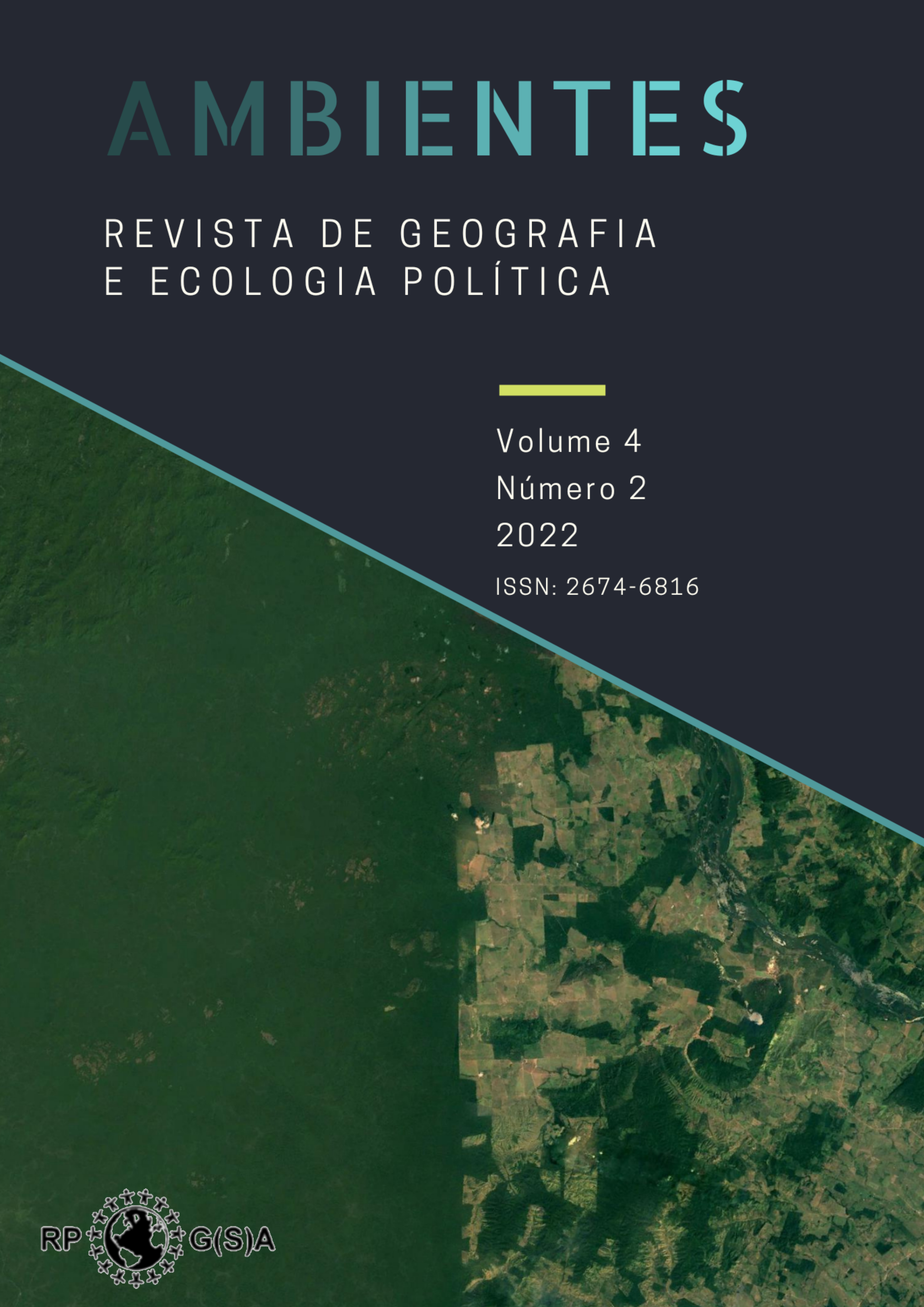Areas of risk of gully erosion in Manaus, state of Amazonas: A contribution to environmental geography
DOI:
https://doi.org/10.48075/amb.v4i2.30322Abstract
This work consists of a geographic-geomorphological analysis of areas at risk for gully erosion in Manaus from the viewpoint of socio-spatial production and based on the theoretical-conceptual assumptions of environmental geography. The results allow us to assert that the overlaps between socio-spatial production and areas at risk in terms of gully erosion in Manaus present as striking features the inadequacy of the rainwater drainage system (piping sizing, disposal of water outlets and energy dissipators), often located in dead-end streets and/or deforested and/or levelled areas; a further feature is its location in the contact areas of spaces differentiated by socio-spatial and historical production within neighbourhoods recognized by municipal legislation (old spaces versus recent spaces; or, neighbourhood/subdivisions/sets/occupation versus green area/unit conservation areas/forest fragments/permanent preservation areas; or, neighbourhood/set/subdivision versus irregular occupations). Therefore, the risk areas constitute true ‘epicentres of environmental vulnerability’ within the neighbourhood/set, that is, they correspond to a ‘periphery within the periphery’ since it spatially delimits the spectrum of the population most excluded from the rights and fundamental guarantees carved in the Federal Constitution of 1988.
Keywords: Risk areas; Gully erosion; Manaus; Amazonas.
Downloads
Published
How to Cite
Issue
Section
License

This work is licensed under a Creative Commons Attribution-NonCommercial-ShareAlike 4.0 International License.
Aviso de Direito Autoral Creative Commons
Política para Periódicos de Acesso Livre
Autores que publicam nesta revista concordam com os seguintes termos:
1. Autores mantém os direitos autorais e concedem à revista o direito de primeira publicação, com o trabalho simultaneamente licenciado sob a Licença Creative Commons Attribution que permite o compartilhamento do trabalho com reconhecimento da autoria e publicação inicial nesta revista.2. Autores têm autorização para assumir contratos adicionais separadamente, para distribuição não-exclusiva da versão do trabalho publicada nesta revista (ex.: publicar em repositório institucional ou como capítulo de livro), com reconhecimento de autoria e publicação inicial nesta revista.
3. Autores têm permissão e são estimulados a publicar e distribuir seu trabalho online (ex.: em repositórios institucionais ou na sua página pessoal) a qualquer ponto antes ou durante o processo editorial, já que isso pode gerar alterações produtivas, bem como aumentar o impacto e a citação do trabalho publicado (Veja O Efeito do Acesso Livre).
Licença Creative Commons
Esta obra está licenciada com uma Licença Creative Commons Atribuição-NãoComercial-CompartilhaIgual 4.0 Internacional, o que permite compartilhar, copiar, distribuir, exibir, reproduzir, a totalidade ou partes desde que não tenha objetivo comercial e sejam citados os autores e a fonte.


